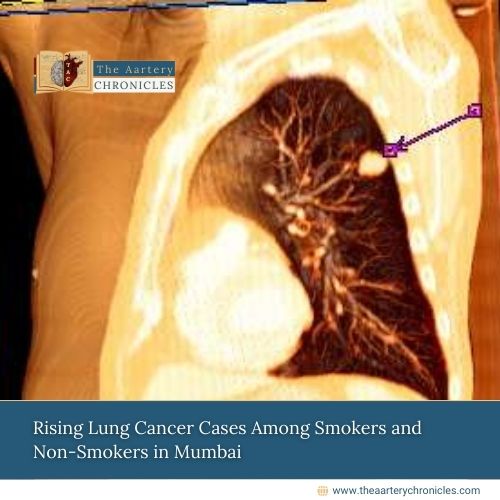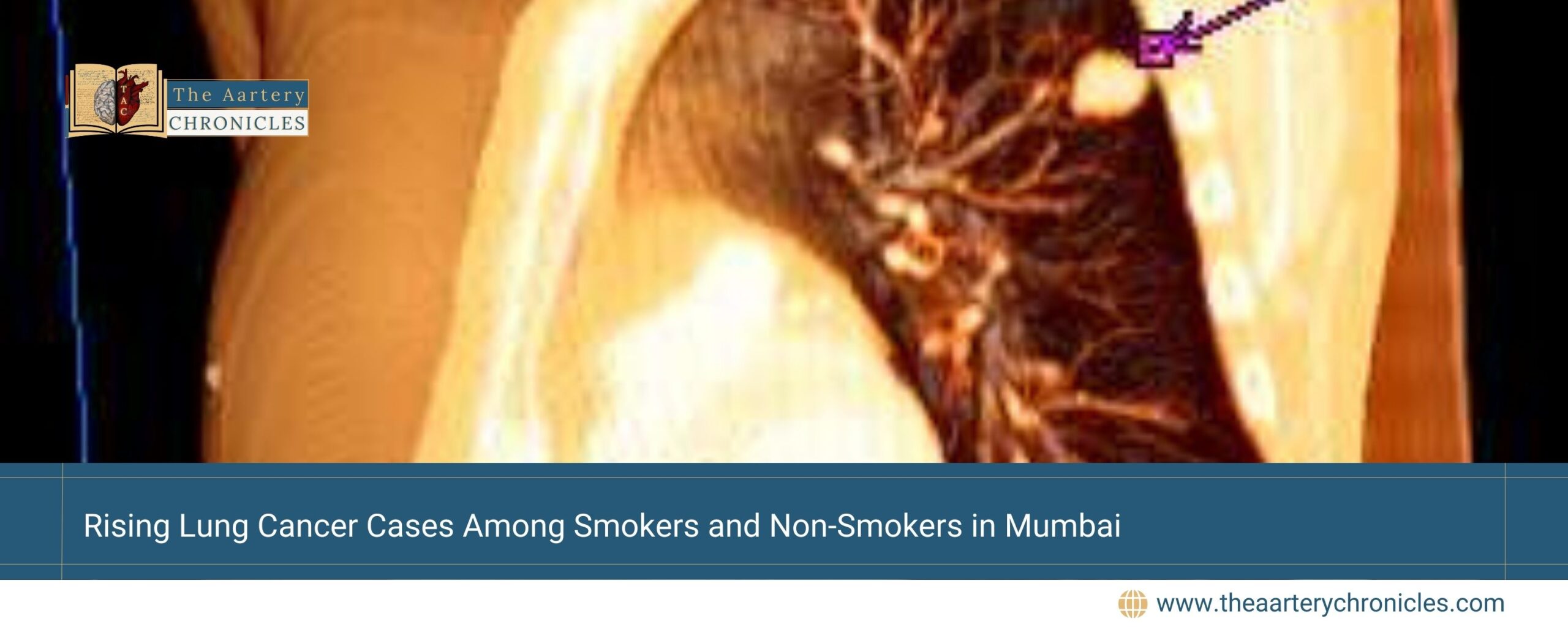

Rising Lung Cancer Cases Among Smokers and Non-Smokers in Mumbai
Introduction
Lung cancer cases are increasing at an alarming rate in both smokers and non-smokers in Mumbai. A significant factor behind this rise among non-smokers is air pollution. Other causes such as poor indoor air quality, lifestyle issues, and exposure to toxins at workplaces are also contributing to the higher number of lung cancer cases. Individuals in their 30s and 40s, both men and women, are now being diagnosed with lung cancer, even without a history of smoking. Persistent coughing is one of the key symptoms in such patients, making early detection and treatment critical to improving survival rates.
Understanding Lung Cancer: A Growing Concern in India
Lung cancer is one of the most common types of cancer, where abnormal cell growth in the lungs leads to the formation of tumours. This growing trend in lung cancer is concerning, with millions of lives at risk. Researchers from the Indian Council of Medical Research (ICMR) predict that lung cancer cases in India will increase sevenfold by 2025 compared to a decade ago. Shockingly, lung cancer is not just affecting smokers but is becoming more common among non-smokers as well.
The Shift in Lung Cancer Trends: Smokers vs. Non-Smokers
Dr. Samir Garde, Director of Pulmonology at Gleneagles Hospital, Parel, highlighted that 20 years ago, most lung cancer patients were smokers. Today, however, many non-smokers are also being diagnosed. The ratio of smokers to non-smokers with lung cancer has shifted from 8:2 to 5:5. This sharp increase in non-smokers developing lung cancer can largely be attributed to both outdoor and indoor pollution. In cities like Mumbai and Delhi, pollution from construction and infrastructure projects is a major contributor. Additionally, indoor air pollution from burning incense sticks, scented candles, and mosquito repellents is also harmful, leading to respiratory issues such as chronic obstructive pulmonary disease (COPD), which may increase the risk of lung cancer.
Lifestyle and Occupational Hazards
Lifestyle factors like obesity, diabetes, and sedentary habits can also indirectly raise the chances of developing lung cancer. Workplace hazards, especially in industries that involve chemical exposure or metal cutting, increase the risk of lung cancer among non-smokers as well.
Impact of Indoor Pollution and Government Interventions
Indoor pollution, particularly in rural areas where churches (traditional wood-burning stoves) were used, has been a major cause of lung cancer, especially among women. Fortunately, over the past few years, the Indian government’s initiative of providing gas cylinders to households has reduced indoor pollution in rural areas, resulting in fewer cases of lung cancer in women. However, in both urban and rural areas, air pollution continues to be a significant factor in lung cancer rates.
Changing Age Group and Early Symptoms
The age group affected by lung cancer has also shifted. Previously, lung cancer was seen mainly in long-term smokers aged 60-70. Now, due to pollution, people in their 30s and 40s are being diagnosed. A persistent cough lasting more than three weeks is one of the main symptoms, and it could be a sign of lung cancer, tuberculosis, or other respiratory conditions. If abnormalities are detected through an X-ray, further testing such as a CT scan or biopsy may be needed to confirm the diagnosis.
Treatment and Prevention
Treatment for lung cancer includes chemotherapy (oral or intravenous), radiation therapy, and sometimes surgery, depending on the stage of the disease. Preventing lung cancer, especially for non-smokers, involves reducing indoor pollution by avoiding the use of incense sticks, scented candles, mosquito repellents, and other chemical-laden products. Instead, it is advised to opt for chemical-free alternatives. Additionally, wearing masks during poor air quality days and using protective gear in industries can help lower the risk.
Conclusion
Dr. Tirathram Kaushik, Consultant Oncosurgeon at Wockhardt Hospitals, emphasized that lung cancer cases among non-smokers are increasing due to secondhand smoke, air pollution, and exposure to harmful gases like radon. Awareness of the risk factors and taking steps to reduce pollution exposure is crucial to lowering lung cancer rates. Early detection and timely treatment can save lives and improve the quality of life for those diagnosed with this disease.
Source: Inputs from various media Sources









